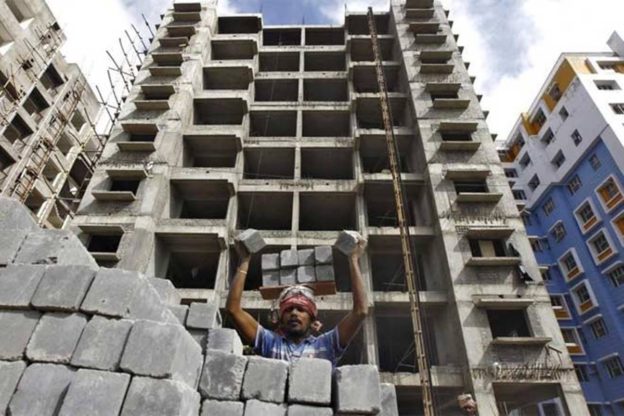Unless the growing menace of stressed and stuck real estate is neutralized, the markets will feel the heat.
After the onslaught by the Pandemic, Indian real estate is showing positive signs of a faster recovery, which is further expedited by the repo rate cuts by the government, reduction in stamp duty in states such as Maharashtra & Karnataka, and push to affordable homes. However, despite an impressive bounce back, Indian real estate continues to be marred by the tantalizing tremors of large volumes of stressed inventories.
Unless the growing menace of stressed/ stuck real estate is neutralized, the markets will feel the heat. Estimates suggest that there are around 450,000 stressed units in the country. The numbers are expected to further spiral in the wake of the current crisis.
Managing the growing challenge will require sustained and concentrated efforts that would not just be limited to raising the right fund but also to bring in a huge degree of operational discipline and financial prudence.
Need-based equities and debt finance: The governing agencies, lending institutions, and private parties need to think proactively towards coming up with new financial instruments that can take care of the individual funding need of the developers.
The current crisis negates the need of coming up with a “one size fits all solution”. There are many projects which are at the advanced stages of development and they do not require huge funding. All they might need is last-mile funding, which can give them a quick turnaround.
Alternative Investment Model: Alternate Investment Fund (AIF) based models could play a significant role in bridging the current investment gap and offer last-mile or kickstart funding to numerous stuck real estate projects.
At 360 Realtors, for instance, we have already taken the initiative by joining hands with Rising Straits. The new entity is called 360 Rising Straits, a real estate AIF that offers last-mile funding and bulk buying services to distressed developers. Our focus is not just limited to raise and manage funds but also to ensure end-to-end execution and timely completion and delivery of projects, giving us an additional edge.
Enhanced FDI Policy: At the onset of the previous decade, FDI in Real Estate was restricted. This affected the 2nd largest employment generating industry in the country, where External Commercial Borrowing (ECB) was already prohibited. With time, there have been notable changes in the FDI policies as currently 100% FDI is allowed in construction development as well as completed projects. However, there is a lock-in period of 3 years. It is argued that if the lock-in can be reduced to 1 or 2 years, then more FDI inflow can be enhanced.
Recapitalization of HFCs and NBFC: In the longer run, the NBFCs and HFCs need to be recapitalized with adequate funding to smoothen developer financing. NBFCs and HFCs are one of the major sources of developer financing and their recapitalization will ensure easier and seamless credit for developers.
Similarly, the government needs to focus on infrastructure funds and other special-purpose vehicles, through which further investments can be channelized. The government has already deployed over INR 12,000 crores in Special Window for Affordable and Mid-Income Housing (SWAMIH) to offer last-mile finding to stressed projects. Although a noble initiative, it will fall short, given the magnitude of the crisis. The government should not rule out the option of forging a partnership with other private lending bodies and AIFs as together they can offer a viable solution. While the former can render the financial resources, the latter can play an instrumental role in offering operational discipline and end-to-end execution.
Conclusion
The stressed real estate is a large problem in the present Indian market that has the potential to cripple the industry if not checked properly. At the same time, it should also be noticed that although it is vast, it is yet not unmanageable. Many such projects are saleable and around 60-70% complete. All they require is a last-mile funding impetus that will put everything back on track. With the right due-diligence (both technical & financial), market and past track record analysis of the developer, assessment of cash flow alongside gauging the project cost and anticipated sales velocity, an optimal funding solution can be structured.
This would not just ensure end-to-end delivery of the project but placate all the major stakeholders. The developers will get a clean exit and the governing agencies will have a sigh of relief. The homebuyers will be the biggest beneficiaries, as they will finally get their house.
Also, these projects are available at deep discounts, which can give smart returns to the Investors. For instance, in our 360 Rising Straits itself, which is a SEBI regulated AIF, we are giving a hurdle rate of 18%. This means we will make a profit only after a disbursal of 18% returns to the investors. Thus in a time when many regular sources of investments are losing their steam, alternate platforms might be the new sunrise, offering great returns.
https://www.financialexpress.com/money/sustained-concentrated-efforts-required-to-manage-growing-stressed-real-estate-in-india/2251525/







